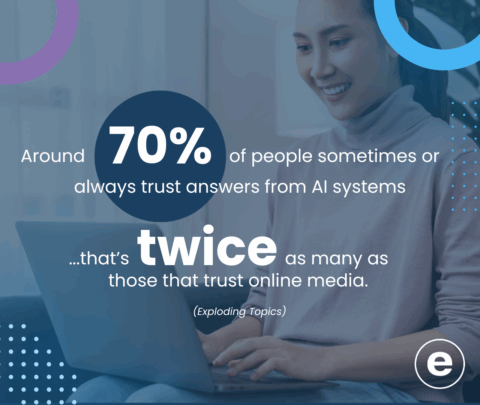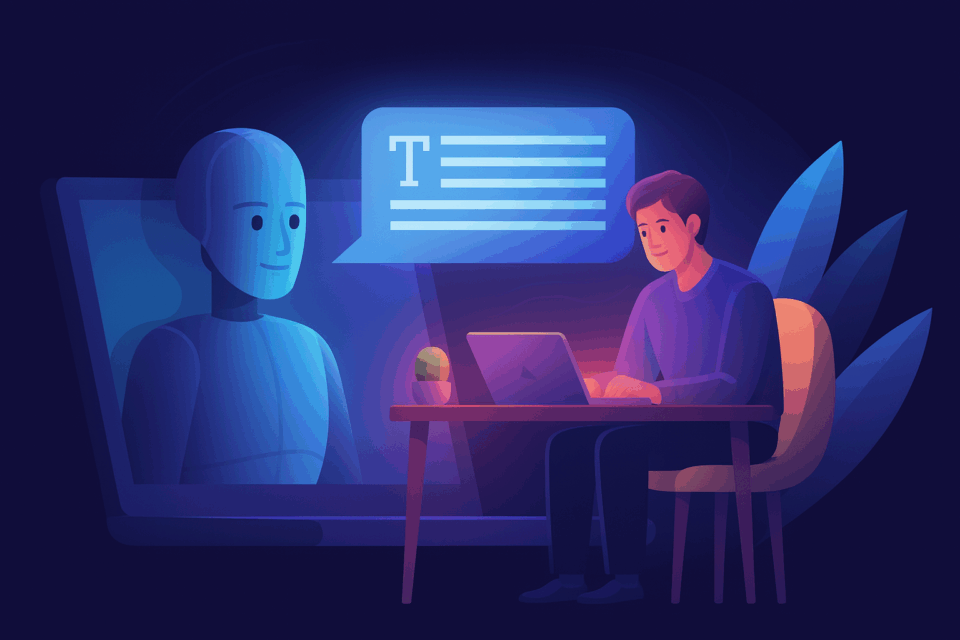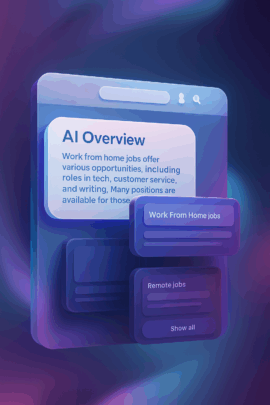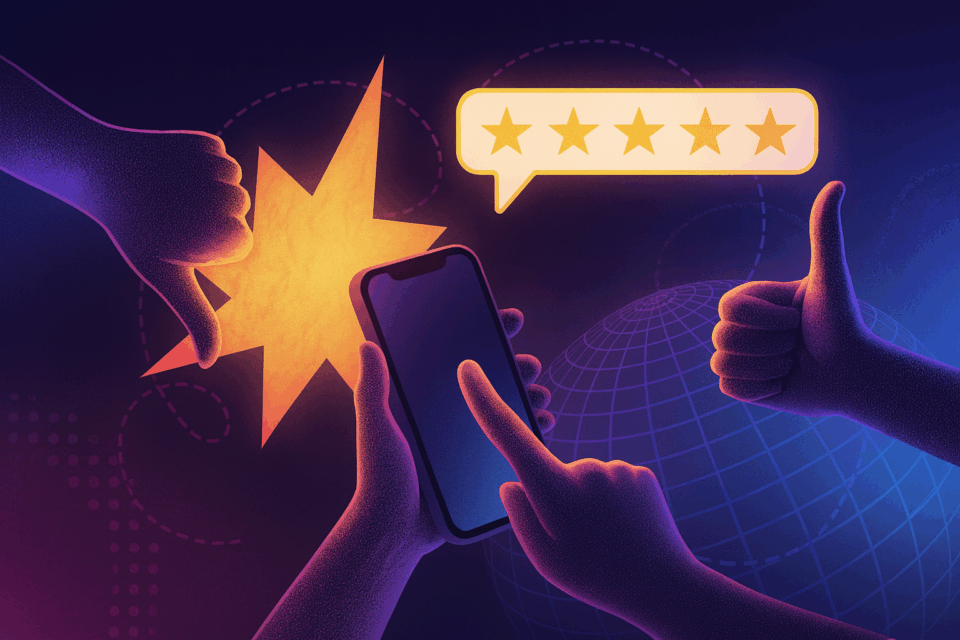
AI Terminology in Talent Attraction
AI is changing the world of digital, with job seeking being no exception.
The rise of AI usage is reshaping the way candidates search, discover, and decide on where to take their skills. This guide demystifies the most important concepts in AI, from Large Language Models and Natural Language Processing to the finer details of entity salience, brand sentiment, and AI crawlability that might affect your employer value proposition (EVP).
We’ve organised these terms into clear categories to help you see why talent attraction teams should care about AI for recruitment and to navigate the landscape with confidence. Each section explains what the term means, why it matters, and how it can be applied in practice to bring AI to your talent strategy.
Ready to dive in? Use the links below to jump to any section or read through from start to finish to build a comprehensive understanding of AI terminology in talent attraction.
AI Fundamentals ✨
This section explains some of the terminology you might see referenced for what’s going on behind the AI platforms. From powerful models that generate human-like text to the interfaces that make AI accessible, understanding these core concepts will help you know how AI can be used in talent acquisition.
AI Platforms
Like the iconic ChatGPT that captured the internet’s imagination when it launched, AI platforms are known usually by their chatbot-style interfaces but also include wider systems. Candidates may use them to research jobs directly, as app integrations or even through AI-powered features such as Google’s AI Overviews in search results.
Examples: ChatGPT, Google’s Gemini, Microsoft’s CoPilot, Musk’s Grok
Queries
Also commonly known outside the world of search as ‘prompts’, these refer to the text that candidates put into AI platforms to find out the information they’re looking for – whether that’s a simple query such as ‘banking jobs in London’ or advanced queries made possible by AI.
Example: An advanced query that consists of multiple parts that need to be searched and filtered might be ‘banking jobs in London with flexible working available where it’ll take me less than 45 minutes to get to the office from High Barnet without a car’
AI Answers
Used interchangeably with ‘responses’, these refer to what is returned by AI platforms from user queries. These go beyond the website listing previews or featured snippets you’d receive in traditional search – generative AI rearranges and writes a brand-new summary of relevant information, tailored around what seemed important in your query.
Example: A user asks for “top 10 UK companies for work-life balance” and receives a list of employers such as Cisco, Hilton, Aviva and Octopus Energy based on recent reports and awards.

Crawlability
This refers to how well AI platforms can access your careers site. If AI platforms can access your content and clearly understand it, then you’re more likely to be recognised for your relevance to jobseekers from your industry.
In practice: You can enhance your crawlability by including easily consumable sitemaps and schemas that add to AI’s understanding of your careers is a key optimisation.
How AI Works ⚙️
Here, we explore the language behind how AI systems process, categorise, and extract meaning from text. These concepts are essential for improving your careers website’s visibility, understanding what your content says about your employer brand, and making informed decisions about targeting and optimisation.
Large Language Models (LLMs)
Advanced machine learning models that power both generative AI and traditional search. They are trained on vast amounts of text to understand and generate human-like language. Examples include GPT-4 and BERT. These models power the user-facing AI platforms such as ChatGPT.
In practice: Large language models are what make text generation, translation and summarising possible.
Natural Language Processing (NLP)
Made possible by LLM’s, natural language processing (NLP) removes the gap between how digital systems and humans use language – so that digital systems can understand, interpret, and generate human language that doesn’t sound robotic.
In practice: NLP is what makes it possible for AI to bulk analyse employee reviews on sites like Glassdoor and report back on the sentiment expressed towards the employer, noting whether it’s positive or negative, to what extent, and for what topics.

Entities
These are defined ‘things’ like people, locations and skills that AI recognises and classifies in text. They are one of the most basic parts of how natural language processing enables AI to give content meaning.
Two more important terms include…
Entity Salience: how important this identified concept is within the content, whether it stands out or fades into the background
Entity Magnitude: how strongly positive or negative the sentiment of the entity is.>
Example: AI takes a passage of text from a careers site and establishes it features entities such as ‘stores’, ‘retail jobs’, ‘customers’, ‘retail teams’, ‘customer service’, ‘skillset’, ‘supervisors’, ‘potential’, ‘skills’, ‘rewards’.
Categories
Based on the entities it finds on a page, AI assigns categories to your content. This is typically 5-7 categories from a bank of over 1,000.
Example: From the types of entities it sees, AI platforms categorise the page from your careers site as being related to both /Business & Industrial/Retail and /Jobs & Education/Job Listings.
Confidence Score
Each category that AI assigns is given a ‘confidence score’, depending on how strongly it associates the page with the topic. Increasing this for the relevant categories where you most want to be seen is an important part of optimising your visibility in AI platforms.
Example: The careers site page for pilots only has a 0.30 confidence in the Aviation Industry as a category – more copy relating to this should be added to the page to provide more signals for this topic.
AI Visibility 👁
How do people see your brand on AI platforms? When are you shown to candidates? This section breaks down terminology around how your employer brand gets seen in AI platforms and the types of search queries users make.
AI Overviews
AI Overviews are the generated summary at the top of a search platform that synthesize content from different sites into a single response, pre-empting the user’s next questions and path of interest.
In practice: Users searching for ‘Apprentice scheme 2025’ may end up with 4-5 employers called out in the summary box at the top of the page before the other search results — will your employer brand be featured?

Branded Questions
Branded questions are ones that specifically reference you or a competitor’s brand. These clearly show that candidates are aware and invested in your employer value proposition.
Example: A branded question asked by a candidate could be: “What jobs can I get at IBM with a 2:1 in classics?”
Unbranded Questions
Unbranded questions are open questions about careers that don’t specify a particular employer. Therefore, AI platforms draw on employers and job opportunities that they match up as being most relevant to the query.
These are the kinds of questions that see you most benefit from optimisation, as your brand gets more exposure to high-intent job seekers.
Example: If appropriately optimised, your job opportunities could be served to candidates through an unbranded question asked by a candidate such as: “What part-time software development jobs are available near me?”
Generative Engine Optimisation (GEO)
While it’s widely known why SEO is important for recruitment, you may be less familiar with this practice, which is also known as AI SEO, SEO+, Search Generative Experience (SGE), AI Optimisation (AIO), Answer Engine Optimisation (AEO) or Large Language Model SEO (LLMSEO).
In short, it’s the growing area of digital marketing focused around how to appear in AI searches, both for how often you’re seen (visibility) and that what’s being said about you is positive (brand sentiment).
In practice: At Enhance Media, our AI Brand Health Audit gives you a transparent picture of how you appear in AI-powered search, as well as handy GEO tips to boost your AI perception.
Talent Brand & Candidate Perception 🫶
There’s lots of ways that AI and machine learning in recruitment are becoming more visible — with AI platforms being new ways for candidates to experience your employer brand and EVP before they visit your site. If you’re curious about sentiment analysis and what it means for your talent brand, read on to discover more:
Brand Sentiment
You may be familiar with reputation management in general, but what does brand sentiment mean in AI? This represents the conversation around your brand, and the opinions that AI platforms can present to candidates — positive and negative.
Based on the wider ecosystem of your brand reputation from awards, employee advocacy, Glassdoor reviews, your own careers site and a range of other sources, AI platforms read this information, form an opinion and then directly communicate a perception about your reputation as an employer to prospective candidates.
In practice: Our AI Brand Health Audit shows you what your brand sentiment score is based on how your employer brand is interpreted by AI across 25 key reputation drivers, from culture and purpose to benefits and work-life balance.

Zero-click Experiences
A rising trend that AI has exacerbated is ‘zero-click’ experiences. This is when a candidate has a query that is resolved from the search listing alone — meaning they find what they were looking for in the AI overview or even the link preview text.
This means that many search journeys — nearly 60% of them, as reported by Fishkin — end without clicking through to your careers site.
In practice: It’s valuable to optimise your perception in AI so that your employer value proposition and brand is effectively communicated to candidates even via third-party sources such as AI platforms.
Mass Candidate Applications
One area where we’re seeing AI already have a large impact is In helping candidates prep CVs and submitting applications.
Candidates are now using AI powered tools to automate entire stages of their job search such as hunting out roles, adapting their CV’s and sending off applications en-masse without ever engaging with your brand.
In practice: At Enhance Media, we’re helping employers tackle the pressures of mass candidate applications that often flood them with low-quality applications to process by auditing their application process and suggesting how to fix their score.
Artificial intelligence is evolving rapidly, but understanding the core concepts empowers you as an employer to stay ahead. Whether you’re improving search relevance, looking into how to do sentiment analysis for your brand, or generally enhancing your employer brand perception, these concepts provide the foundation to make confident, informed decisions.
Contact our friendly team of experts to find out more or read more about how we could help you get the full picture of your employer brand’s performance in AI platforms with the AI Brand Health Audit.
- Topics:
- AI Insights




